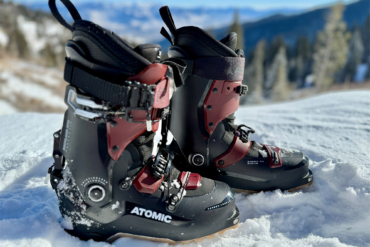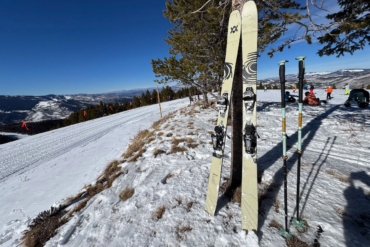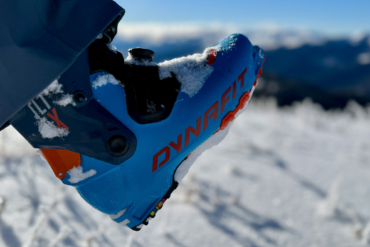Avalanches reputedly kill more people on national forest land than any other hazard. These pointers will help you avoid avalanches this winter.
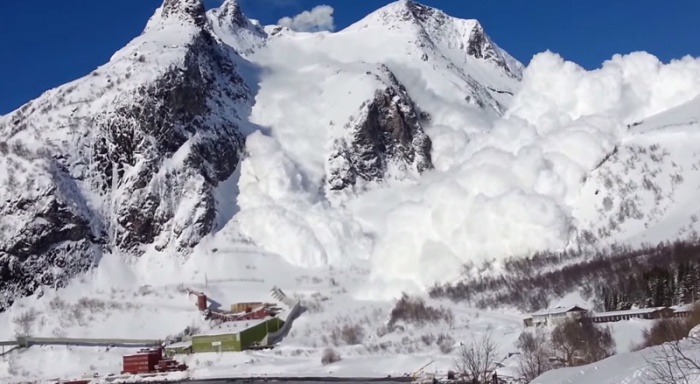
My buddy and I were ascending a steep variation on Mount Fairweather’s broad southwest face. I heard a crack, and then looked up. The blue sky disappeared under a white wave spilling over the rock band above us. I tucked against the wall and tightened the belay, waiting for the worst to happen.
The draw of the mountains is potent. In light of last week’s tragic events in Montana, and with winter on its way, it’s time to revisit the hazards of avalanches.
Before we go too far, it should be noted that these are cursory notes on the subject. Traveling safely into the winter backcountry and avalanche awareness are lifetime pursuits learned through proper training. This article provides some reminders for those who have taken avalanche courses and aims to inspire new backcountry travelers to register for a course before hitting the slopes.
For more information and formal training, click on over to the American Institute for Avalanche Research and Education (AIARE).

Avalanches: What They Are
Avalanches happen when debris sloughs off steep slopes. They can be composed of soil, rock, or snow. For the purposes of this discussion, we will focus on slab snow avalanches, the most common to affect backcountry adventurers.
Dry avalanches are the culmination of conditions and a trigger — often a skier, snowshoer, climber, or snowmobiler — that causes the surface snow to splinter off an underlying layer, often taking out everything in its path.
Where Avalanches Happen
Though avalanches can occur on any slope with the right conditions, they generally occur when snow accumulates over moderately steep slopes that angle between 30 and 45 degrees. On less steep slopes, snow rarely slides. Steeper slopes will typically slough new snow more regularly, preventing the significant snow accumulation that forms avalanches.
That said, avalanches certainly can occur on steeper or less steep slopes. But this is where they are most common.
How to Avoid
Stick to the resort. Resorts take preemptive measures — shutting down runs or releasing potential slides — to ensure slopes are safe to ski.
In the backcountry, the best way to stay out of an avalanche is to stay off avalanche-prone slopes over 30 degrees. An inclinometer can accurately measure the angle of a slope. If unsure, stay off and away from even moderately steep hillsides, and beware that avalanches can run a long way away from their slide paths on steep slopes.

If you plan to ski in avalanche terrain in the backcountry, you must carry avalanche safety gear and know how to use it. The best way to do this is to take a course!
The Five ‘Gets’
Nine out of 10 avalanches are triggered by someone in the party. Pinpointing the cause stacks knowledge in your corner. Avalanche experts use five points to mitigate risk.
1: Get the gear. At minimum, never go into avalanche terrain without a transceiver, shovel, and probe.
Consider bringing the following:
- Inflatable backpack: Helps float victims to the surface of avalanche debris
- AvaLung: Works to extract air directly out of the snowpack
- Recco reflectors: Help rescuers pinpoint your location
- Cellphone
- First-aid kit
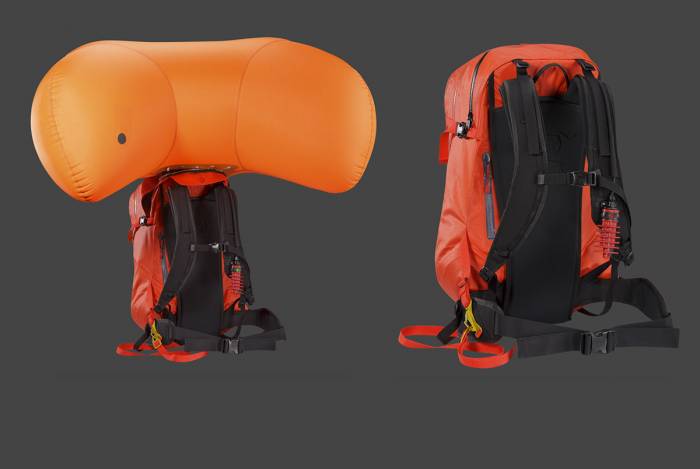
2: Get the training. Gear alone isn’t enough — you need to know how to use it. Training doesn’t stop in the classroom. It should be a part of your checklist whenever departing into the backcountry. Practice using a transceiver regularly with ski partners.
Avalanches happen for a reason. Training helps you understand how snowpack and weather contribute to avalanche threat and what to do if caught.
Find an avalanche class near you at AIARE.
3: Get the forecast. Avalanches are most common during and up to 24 hours after a storm that precipitates more than a foot of snow. Wind-loading of snow also causes conditions ripe for avalanches. Forecasters gather data to make predictions on avalanche risk, and they rate conditions from one (low) through five (extreme) for various altitudes and face aspects or directions.
Learning to read these forecasts and make good decisions based on them is another important reason to take a class. Do it — they’re fun!

Avalanche.ca lists conditions in Canada. For conditions in the States, see Avalanche.org. Most states run local forecast offices too, such as the Colorado Avalanche Information Center.
4: Get the picture. You have the gear, forecast, and training. But conditions may present themselves differently in the field.
Keep your eyes peeled. Is there evidence of prior slides, like bent trees or blown-out gullies? If an avalanche was to occur, what does the runout below look like? Would it wash you off a cliff, into a terrain trap, or out into a broad meadow?
If it feels sketchy, send one person down at a time. Watch one another from a safe location, out of trigger and runout zones.
Keep an eye on shifting conditions, like weather, elevation, sunlight, and wind. And listen for (un)settling snow, known as “whumphing.” Remember to communicate regularly with your partners to maximize safety.
5: Get out of harm’s way. Stay out of potential avalanche paths and runout zones, and don’t wander onto suspect slopes. Instead, stay to the side of potential flows.
Lastly, make sure every member of your team has gear and the skill to use it.
What to Do If Encountered
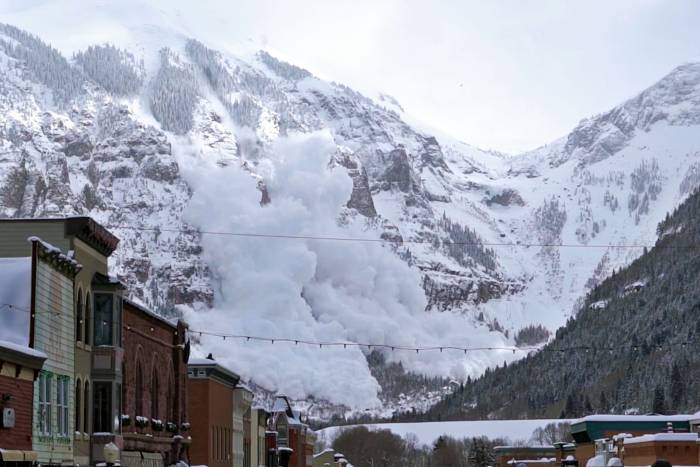
Caught in an avalanche? Avalanche.ca has a few suggestions.
Grab onto anything stable. This may work at the trigger point, but it won’t likely help you if you are hit by a moving flow. The idea is to get off the descending slab.
Try to ditch your gear. Skis, poles, and boards can be dangerous in the fall, causing blunt-force trauma.
Try to “swim” to stay on the surface and off to the side of the avalanche. Inflatable backpacks, or avalanche balloon systems, can float you to the surface, stacking the odds of survival in your favor instead of getting churned under the debris.
Roll onto your back and descend feet first. Like whitewater rafting, this position puts your face up and leverages your legs as potential shock absorbers and brakes.
Keep your teeth clenched and mouth closed to prevent snow from packing down your airway.
Arm up. When the avalanche slows, try to wriggle yourself to the top. The snow will quickly cement around you, preventing any movement. Try to get an arm to the surface to indicate your location to others.
Asphyxia is the number one cause of death in an avalanche. If you’re caught under the snow, try to create an air pocket around your face with your arms. Anything you can do to give you more air can add precious minutes to your rescue.
After the avalanche stops, try to dig yourself out if possible. Stay calm and shout only when a rescuer is near. If completely buried, stay as calm as possible. It’s up to your buddies to dig you out.
Rescuing an Avalanche Victim
We list these steps as a refresher for those who have taken avalanche courses. This is not a replacement for a full course!
Let your team know. Tell your partners what’s going on. You need everyone to keep a line of sight on where the victim was last seen.
Make sure it’s safe to search. You can’t save anyone if you get caught in the avalanche. Wait for it to pass before heading down for the rescue.
Establish a leader. Who’s in command? The leader can quickly assess a single plan for everyone to follow.
Look for clues. Look for any clothing, snowmobiles, or gear that might indicate where your buddy might be. Leave it where you found it so the rescue team can follow a proper search pattern.
Switch the transceiver to “receive” to home in on the victim’s position as quickly as possible.
Use the probe to pinpoint their location.
Use the shovel to dig them out.
Rescue is hard work with a small window of opportunity. Knowledge and time are critical for success.
Worst-Case Scenario
Avalanches can be fatal. One in four people who die in an avalanche will die from blunt-force trauma, hitting trees or rocks during the fall. Of those who survive the initial cascade, two of the remaining three die from asphyxia or hypothermia.
If the victim is found within 15 minutes, there is a 92% survival rate. Extended to 35 minutes, the survival rate plummets to 27%. After 90 minutes, death is very likely.
Wearing beacons and inflatable packs can stack the odds in your favor.
But in most cases, avalanches are entirely avoidable. Know the conditions before going. If the conditions look sketchy, stay off slopes steeper than 30 degrees and away from avalanche runout zones. Always carry the essentials. If you have the skills, dig a pit and examine the snowpack patterns.
If you live near or play in the snow, get the gear and get instructed on how to travel safely in avalanche country. It can save your life and the lives of your friends.
For those who would like some more info on snow safety but haven’t decided if a class is for them, check out Salomon’s snow safety courses online. Then, head over to AIARE and register for an Avalanche One course. You and your partners will be happy you did.


